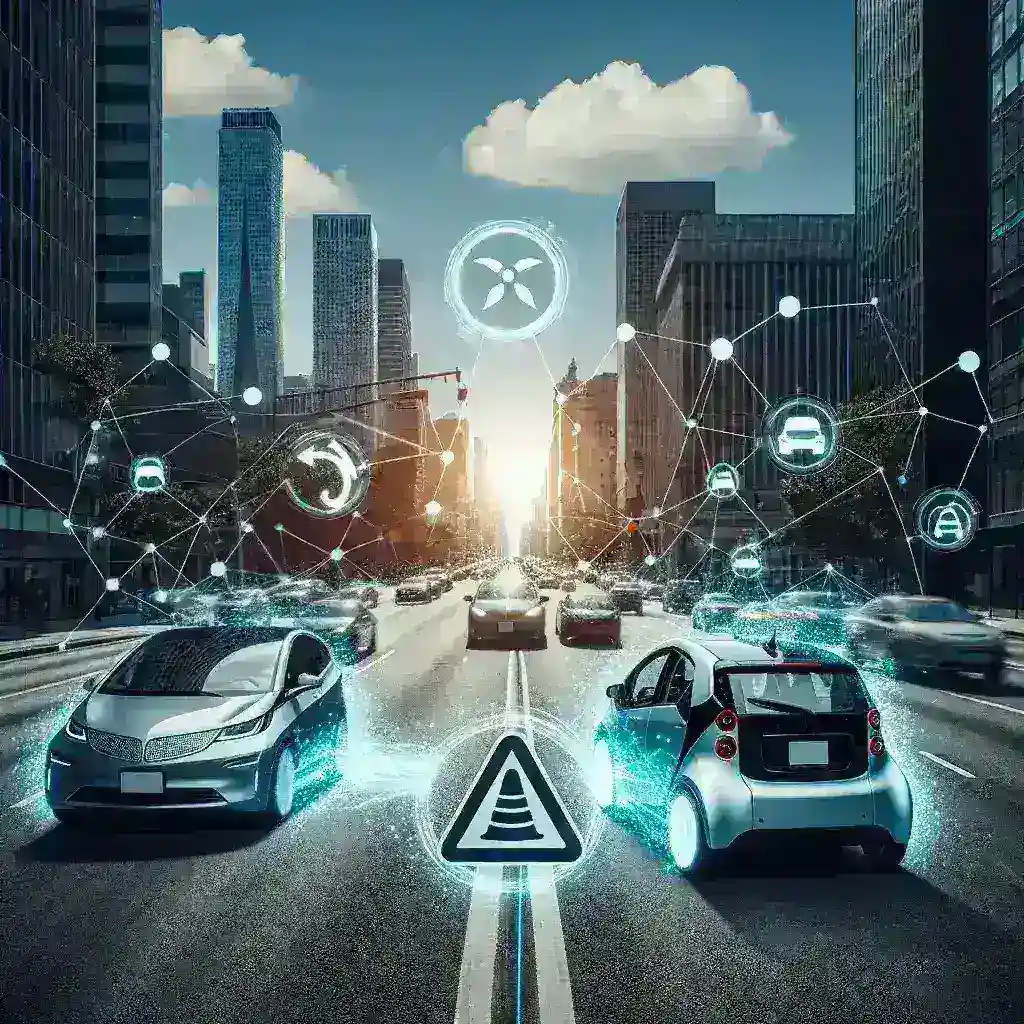Introduction
In an era where technology is rapidly evolving, Tesla stands at the forefront of automotive innovation, particularly in the realm of electric vehicles (EVs). Recently, the company has embarked on an ambitious project focused on integrating AI-powered fleet-wide accident prevention updates across its U.S. EVs. This initiative aims to not only enhance vehicle safety but also significantly reduce the likelihood of accidents on the road. In this article, we delve into the various aspects of Tesla’s groundbreaking testing processes, the implications of these updates, and what they mean for the future of driving.
The Role of AI in Accident Prevention
Artificial Intelligence (AI) has revolutionized numerous industries, and the automotive sector is no exception. Tesla’s use of AI for accident prevention is a multi-faceted approach that leverages data from a vast network of vehicles to predict and prevent possible collisions.
Key Features of Tesla’s AI-Powered Updates:
- Real-time Data Analysis: Tesla vehicles are equipped with advanced sensors and cameras that continuously collect data. This data is analyzed in real-time to identify potential hazards.
- Fleets Learning from Each Other: With the fleet-wide capability, every vehicle on the road contributes to a collective learning experience, enhancing the AI’s ability to foresee and react to possible dangers.
- Adaptive Learning: The AI system continually evolves, adapting to new driving conditions and patterns, ensuring that it remains effective even as traffic dynamics change.
Historical Context of Tesla’s Innovations
Since its inception, Tesla has aimed to revolutionize how we perceive and utilize vehicles. From the launch of the Roadster in 2008 to the recent advancements in Full Self-Driving (FSD) technology, the company has consistently pushed the envelope. The integration of AI into accident prevention builds on Tesla’s storied history of prioritizing safety and innovation.
Current Testing Phases
Phase 1: Data Collection
The first phase of the testing involves extensive data collection. Tesla vehicles on the road gather information related to driving patterns, weather conditions, and accident occurrences. This phase is crucial as it lays the groundwork for the subsequent AI training processes.
Phase 2: Algorithm Development
Once sufficient data has been collected, engineers and data scientists work together to develop algorithms that can predict accidents based on the gathered information. The aim is to create a system that can assess risk levels in real-time.
Phase 3: Simulation Testing
Before deploying these updates to actual vehicles, Tesla conducts rigorous simulation testing. This allows engineers to evaluate the effectiveness of the algorithms in a controlled environment, ensuring that the systems react appropriately to various scenarios.
Phase 4: Pilot Deployment
After successful simulations, Tesla begins a pilot deployment of the updates in select regions. Feedback from these early adopters is critical for identifying any issues and refining the systems.
Future Predictions: What Lies Ahead?
The future of Tesla’s AI-powered accident prevention technology is promising. As the system is further refined and more data is collected, we can anticipate significant advancements in vehicle safety. Some experts predict that it could lead to a future where accidents are exceedingly rare, dramatically changing the landscape of road safety.
Impact on Insurance and Liability
The widespread adoption of AI-driven safety features could also reshape the insurance industry. With fewer accidents, insurance premiums may decrease. Additionally, questions surrounding liability in the event of an accident involving AI systems will require careful consideration.
Pros and Cons of AI-Powered Accident Prevention
Pros:
- Enhanced Safety: The primary benefit is the potential for reduced accidents, leading to safer roads for all.
- Data-Driven Insights: Continuous data collection allows for ongoing improvements in driving safety measures.
- Insurance Benefits: Reduced accidents may lead to lower insurance costs for EV owners.
Cons:
- Technological Dependence: Relying on AI systems may reduce drivers’ attention and engagement.
- Privacy Concerns: Continuous data collection raises questions about user privacy and data security.
- Liability Issues: Determining fault in accidents involving AI systems could become complicated.
Real-World Examples
To illustrate the effectiveness of such systems, let’s consider various real-world applications of AI in vehicle safety:
Example 1: Tesla’s Autopilot
Tesla’s Autopilot feature demonstrates the capabilities of AI in enhancing driving safety. With features such as lane-keeping assistance and automatic emergency braking, many users have reported a greater sense of security while using this technology.
Example 2: Ford’s Co-Pilot360
Ford’s Co-Pilot360 system integrates various safety features powered by AI, including pre-collision assist and blind-spot monitoring. Such systems have proven effective in minimizing accidents.
Expert Opinions
Experts in the field of automotive safety and AI have weighed in on Tesla’s latest initiatives:
“Tesla is pioneering a new path in automotive safety. With their AI updates, they are setting a standard that could redefine how vehicles interact with the environment around them.” – Dr. Amelia Ford, Automotive Safety Analyst.
The Cultural Relevance of Safe Driving
As technology continues to shape our lives, the cultural emphasis on safe driving grows stronger. Tesla’s AI-driven initiatives not only reflect a commitment to safety but also align with societal expectations of accountability and responsibility on the roads.
Conclusion
Tesla’s testing of AI-powered fleet-wide accident prevention updates marks a significant step forward in vehicle safety technology. By utilizing real-time data, adaptive learning, and extensive testing phases, Tesla aims to create a safer driving experience for all. As we look to the future, the potential for reduced accidents through AI integration paints an optimistic picture for road safety. While challenges remain, the ongoing advancements in this technology promise to transform how we think about driving, safety, and responsibility.

Leave a Reply